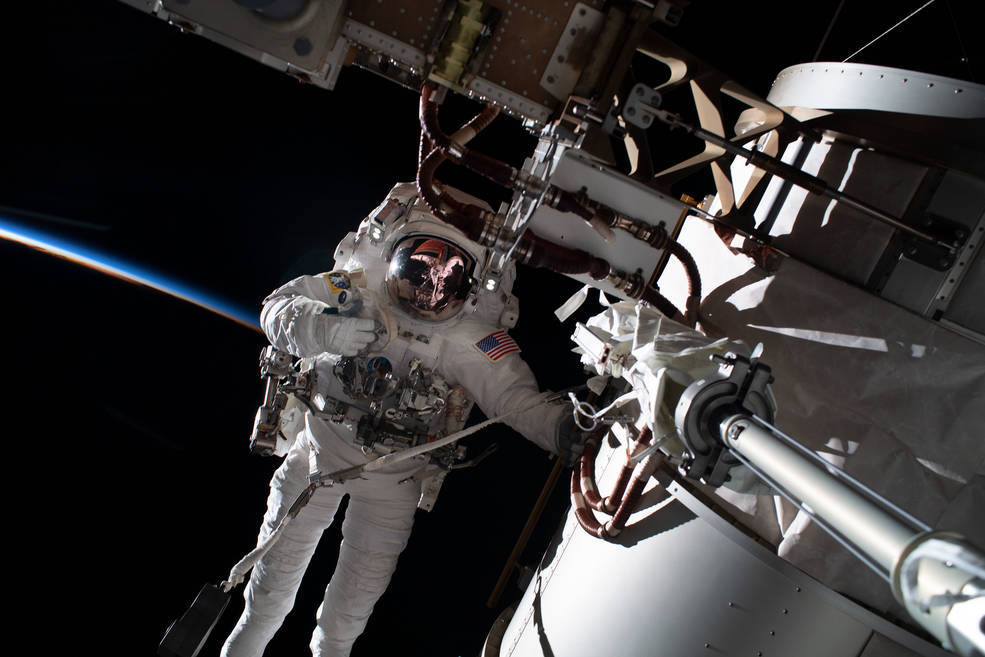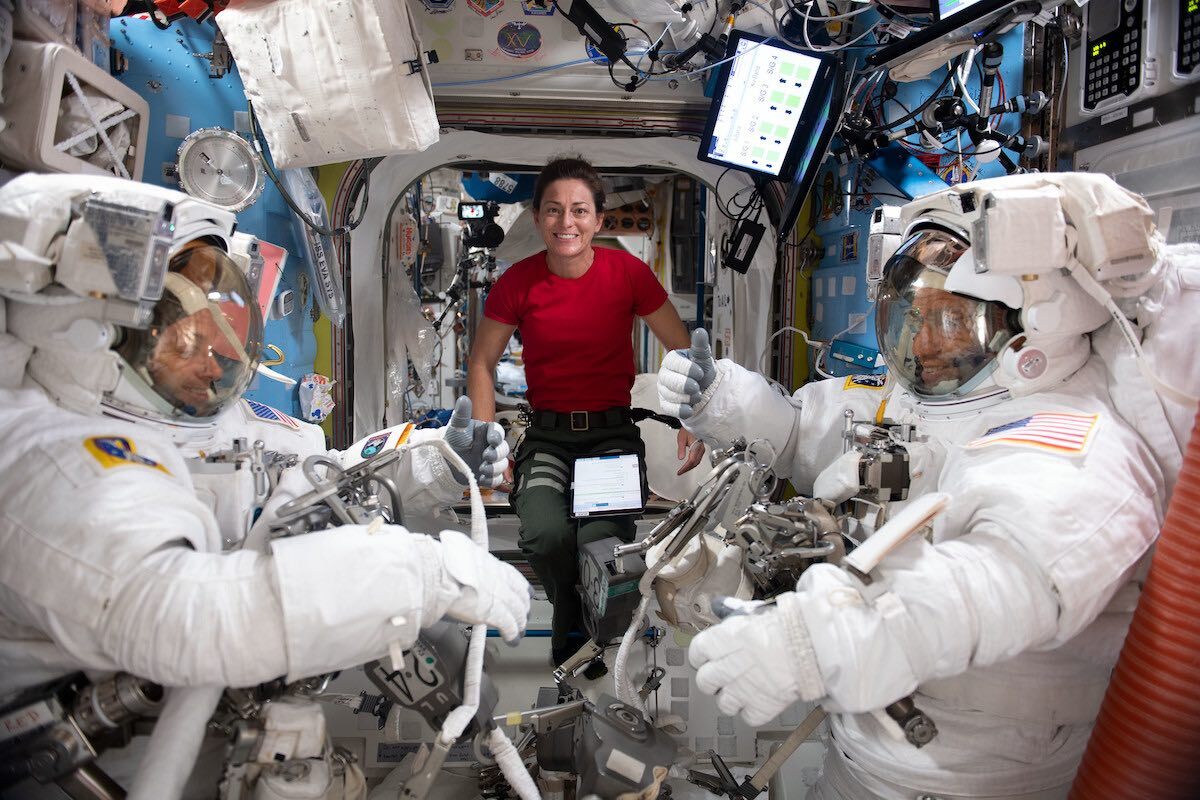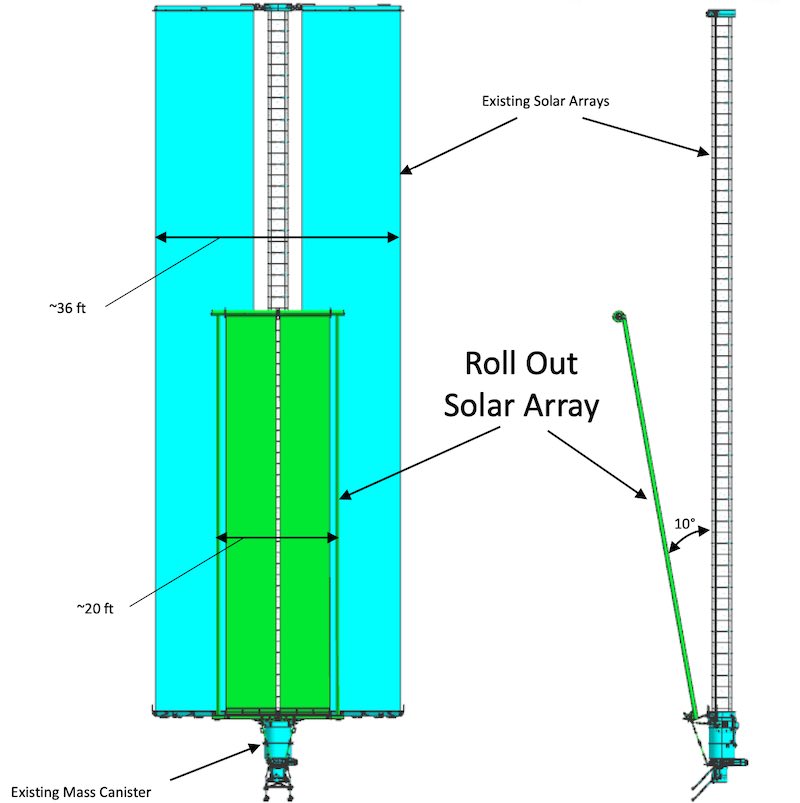3.12.2022

Astronauts aboard the International Space Station will conduct a pair of U.S. spacewalks in December to install rollout solar arrays to increase electrical power in support of station operations and scientific research.
NASA will provide live coverage of the first spacewalk beginning at 6 a.m. EST on Saturday, Dec. 3 on NASA Television, the NASA app, and the agency’s website. The spacewalk is scheduled to begin at 7:25 a.m. and last about seven hours.
NASA astronauts Josh Cassada and Frank Rubio will exit the station’s Quest airlock to install an International Space Station Roll-Out Solar Array (iROSA) to augment power generation for the 3A power channel on the station’s starboard truss structure.
In addition to installing an iROSA, the spacewalkers will disconnect a cable to ensure the 1B channel can be reactivated. Flight controllers recently changed electrical power routing to remove one of the eight International Space Station power channels from use to ensure batteries were being charged at expected levels. Station systems normally powered by the 1B channel are currently using electricity from the 1A power channel with no impact to station operations.
This spacewalking task will restore redundancy for affected station systems following unexpected tripping observed on the 1B channel Nov. 26. By isolating a section of the impacted array, which was one of several damaged strings, the goal is to restore 75% of the array’s functionality.
Cassada and Rubio are scheduled to conduct the next U.S. spacewalk Dec.19, this time to install an iROSA on the 4A power channel on the port truss. The exact times of the spacewalk and NASA coverage will be determined later.
For the Dec. 3 spacewalk Cassada will serve as extravehicular crew member 1 (EV 1) and will wear a suit with red stripes. Rubio will serve as extravehicular crew member 2 (EV 2) and will wear the unmarked suit. For the Dec. 19 spacewalk, Rubio will serve as extravehicular crew number 1 (EV 1) and will wear a suit with red stripes. Cassada will serve as extravehicular crew member 2 and will wear the unmarked suit. The spacewalks will be the second and third spacewalks in both Cassada and Rubio’s careers.
The iROSAs arrived at the space station on Nov. 27, following a launch aboard the agency’s 26th SpaceX Dragon commercial resupply mission on Nov. 26.
These will be the third and fourth iROSAs installed on space station out of a total six planned for installation. Overall, the iROSAs will increase power generation capability by up to 30%, increasing the station’s total available power from 160 kilowatts to up to 215 kilowatts.
Quelle: NASA
+++
Watch live: Astronauts install new solar array outside International Space Station
NASA astronauts Josh Cassada and Frank Rubio put on their spacesuits Saturday and headed outside the International Space Station for a spacewalk to install and unfurl a new roll-out solar array recently delivered by a SpaceX cargo ship.
Cassada and Rubio, both on their first flights to space, began the spacewalk at 7:16 a.m. EST (1216 GMT) Saturday. The start of the excursion was officially marked when the astronauts switch their spacesuits to battery power.
The astronauts will move from the space station’s Quest airlock to the starboard, or right, side of the lab’s solar power truss, where the station’s robotic arm placed two new ISS Roll-Out Solar Array, or iROSA, units earlier this week after extracting them from the trunk of a SpaceX Dragon cargo capsule. The Dragon spacecraft delivered the solar arrays to the space station Nov. 27, along with several tons of supplies and experiments.
Cassada is designated EV-1, or the lead spacewalker, on Saturday’s excursion. He is wearing a suit with red stripes. Rubio will is wearing an all-white spacesuit.
The new solar array blankets are wrapped around spools and will unroll like a yoga mat once installed onto a mounting bracket on the starboard 4, or S4, section of the space station’s power truss, which measures more than the length of a football field from end-to-end.
The astronauts will initially work to remove one of the two newly-delivered iROSA units from its carrier by releasing bolts and launch restraints. Cassada will take position on a foot restraint on the end of the Canadian-built robotic arm, and hold the solar array spools while the arm moves him to the S4 truss.
The two spacewalkers will position the iROSA unit onto a mounting bracket pre-positioned during a previous spacewalk. They will unfold the iROSA unit on its hinge, then install bolts to secure it into place. Cassada and Rubio will mate electrical connectors to link the new iROSA unit to the space station’s electrical system. They will put in a Y cable to route power generated by both the new roll-out solar array and the original S4 solar panel into the lab’s power grid.

The mounting bracket plugs the new arrays into the station’s power channels and rotary joints, which keep the solar wings pointed at the sun as the spacecraft races around Earth at more than 17,000 mph.
The International Space Station has eight power channels, each fed with electrical power generated from one solar array wing extending from the station’s truss backbone. The new solar array to be deployed Saturday will produce electricity for the space station’s 3A power channel.
The original solar panels launched on four space shuttle missions from 2000 to 2009. As expected, the efficiency of the station’s original solar arrays has degraded over time. NASA is upgrading the space station’s power system with the new roll-out solar arrays, which will partially cover six of the station’s eight original solar panels.
When all six iROSA units are deployed on the station, the power system will be capable of generating 215 kilowatts of electricity to support at least another decade of science operations. The enhancement will also accommodate new commercial modules planned to launch to the space station.
The first pair of new roll-out solar arrays launched to the space station last year, and were installed over the station’s oldest set of original solar panels on the P6 truss section, located on the far left end of the outpost’s power truss. Two more iROSA units are slated to launch on a SpaceX resupply mission next year.
The new solar arrays were supplied to NASA by Boeing, Redwire, and a team of subcontractors.
Once the new iROSA unit is mechanical and electrically integrated onto the station’s S4 truss, hen the astronauts released clamps keeping the roll-out solar array spooled in its launch configuration. They will allow the blankets to gradually unroll using strain energy in the composite booms supporting the solar blanket. The design of the deployment mechanism eliminates the need for motors to drive the solar array.

The carbon fiber support booms were rolled back against their natural shape for storage during launch.
It will take about 6 to 10 minutes for the solar array to unroll to its fully extended configuration, stretching about 63 feet long and 20 feet wide (19-by-6 meters). That’s about half the length and half the width of the station’s current solar arrays. Despite their smaller size, each of the new arrays generate about the same amount of electricity as each of the station’s existing solar panels.
Once the blanket is unfurled, the astronauts will adjust tensioning bolts to secure the iROSA blanket in place.
The astronauts will then head back in-board on the space station’s truss to prep another iROSA unit, which will be installed on the left-side P4 truss section on a spacewalk tentatively scheduled for Dec. 19.
The spacewalk Saturday is the second in the careers of Cassada and Rubio, and the 256th spacewalk since 1998 in support of International Space Station assembly and maintenance.
Quelle: SN
